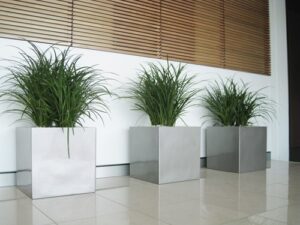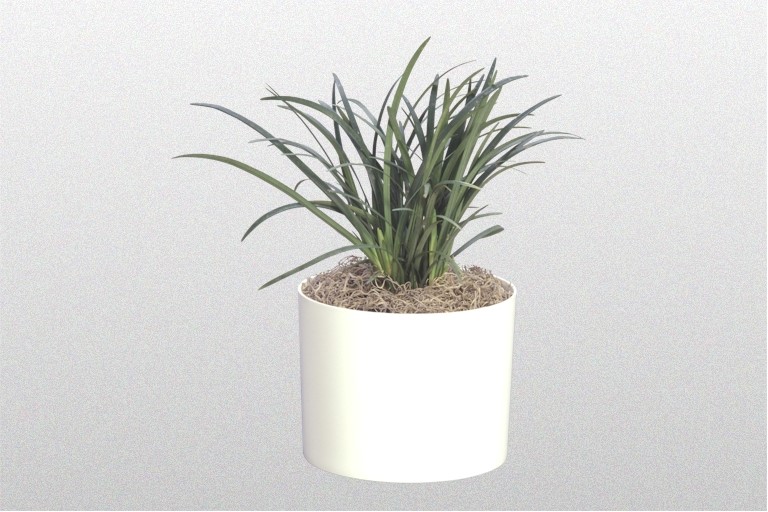Planting in Containers
Liriope can also be planted in containers. They provide a nice grassy texture and flower color in mixed container gardens. You can make your container garden stand out with this strategic design element.

Liriope is most often used as ground cover, but it can also be grown in pots. Grow the plant in moist, well-drained soil, such as a quality general-purpose potting mix. The container should be large enough for the plant to grow for two to three years—at least 3 inches longer and deeper than the specimen.
Soil pH Preference
Liriope grows best in mildly acid to neutral soil ranging from 6.0 to 7.0 on the pH scale. Most potting soil from packages is pH balanced. Be sure the water used is of the same balance or it will start to change the pH of the soil.
Testing Soil pH
Soil pH is a measurement of the alkalinity or acidity of soil and is measured on a scale of 1-14 with 7 as the neutral mark. Any measurement below 7 indicates alkaline. If you are unsure about the pH of your soil, and whether it is suitable for growing liriope, it is a good idea to test the soil pH in the planting area. You can quickly test soil pH with an inexpensive pH tester probe.
To raise the pH (make it more alkaline) you can add pelletized limestone to the soil. To lower the pH (make more acid) you can apply soil sulfur. Adding organic compost to the soil or using compost as mulch can help to increase acidity and maintain acid soil conditions.

Other Preferences
Light Preferences
Liriope is remarkably tough. It will grow in deep shade or full sun. Flowers are produced most freely in a sunny location. With that in mind also consider the heat build-up from a container in full sun where the sides are not shaded. this will increase the need for watering. One strategy for large planters is to use cascading plants on the side to help shade the planter slightly.
Watering Needs
Liriope will tolerate dry conditions quite well. but a dry container is not the same as dry soil conditions. Remember in a container you are simulating the real-world conditions in a closed system, every variable is more important. Check to be sure the soil is moist often and water when needed. Once you establish a pattern you should be good, but remember to check and start a new pattern for each season.
Liriope Spacing
For containers, the spacing should be at least 10 inches apart to allow the grassiness of the plant’s shape to have adequate space to spread out. Make sure other plants are not planted too close in a container garden or they may get overshadowed by the liriope. The tall element of your container garden will pair well with the liriope. This can duplicate, on a smaller scale, one of the primary uses of liriope as a way to frame the base of a tree or palm.
Time Of Year To Plant
Liriope can survive through winter in temperate climates, meaning it is possible to plant any time between early spring and late summer. In warmer climates, it is also possible to plant in the fall, but planting in spring and summer will give your liriope the best chance of thriving.
Planting In Containers
Choose the Right Material
You can get the container for your plants made with materials like plastic, terracotta, ceramic, metal, wood, or concrete. The type you choose depends on you. Each material has its pros and cons that you need to be aware of before choosing the container.
Plastic
Plastic containers are inexpensive, durable, and lightweight. They will not lose moisture as fast as some other materials. You do need to pick containers that are made with durable plastic and free from chemicals such as BPA. Plastic may also have a problem when kept in the sun for too long as it tends to lose color. You may also find that plastic containers are basic in design and don’t have much appeal.
Terracotta
Terracotta is a natural material that is inexpensive but it can be brittle and heavy. The material has pores which means the potting soil can lose moisture fast due to wicking. Terracotta pots also have basic color and an earthy look that may appeal to some but not to others. Keeping a terracotta pot outside in cold weather will make it brittle as the water in the pores freezes and expands. So you need to bring these pots indoors once the cold season begins.
Ceramic